Solar eclipse of July 22, 1990
A total solar eclipse occurred on July 22, 1990. A solar eclipse occurs when the Moon passes between Earth and the Sun, thereby totally or partly obscuring the image of the Sun for a viewer on Earth. A total solar eclipse occurs when the Moon's apparent diameter is larger than the Sun's, blocking all direct sunlight, turning day into darkness. Totality occurs in a narrow path across Earth's surface, with the partial solar eclipse visible over a surrounding region thousands of kilometres wide. Totality was visible in southern Finland, the Soviet Union (including today's northern Estonia and northern Russia), and eastern Andreanof Islands and Amukta of Alaska.
| Solar eclipse of July 22, 1990 | |
|---|---|
_(cropped).jpg) Partial from Finland | |
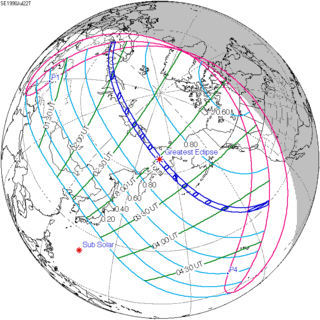 Map | |
| Type of eclipse | |
| Nature | Total |
| Gamma | 0.7597 |
| Magnitude | 1.0391 |
| Maximum eclipse | |
| Duration | 153 sec (2 m 33 s) |
| Coordinates | 65.2°N 168.9°E |
| Max. width of band | 201 km (125 mi) |
| Times (UTC) | |
| Greatest eclipse | 3:03:07 |
| References | |
| Saros | 126 (46 of 72) |
| Catalog # (SE5000) | 9487 |
In Finland the solar eclipse occurred during sunrise and enabled observation and photography without protective glasses, which was however hampered by strong clouds.[1] The Sun was totally eclipsed in Helsinki began at 06:03:07 local time.
Related eclipses
Eclipses of 1990
Solar eclipses 1990–1992
This eclipse is a member of a semester series. An eclipse in a semester series of solar eclipses repeats approximately every 177 days and 4 hours (a semester) at alternating nodes of the Moon's orbit.[2] This semester series contains only 7 eclipses.
| Solar eclipse series sets from 1990–1992 | ||||||
|---|---|---|---|---|---|---|
| Ascending node | Descending node | |||||
| Saros | Map | Gamma | Saros | Map | Gamma | |
| 111 | 1989 February 6 | -1.56550 | 116 | 1989 August 1 | 1.58396 | |
| 121 | 1990 January 26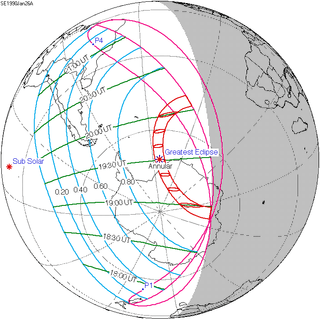 Annular | -0.94571 | 126 | 1990 July 22 Total | 0.75972 | |
| 131 | 1991 January 15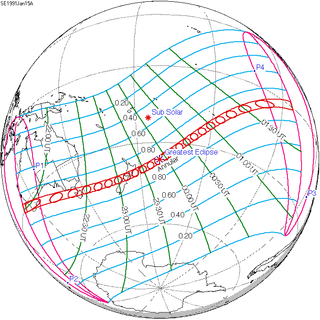 Annular | -0.27275 | 136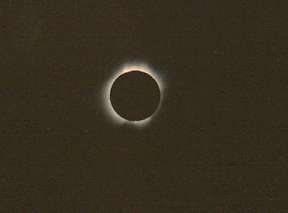 From Playas del Coco | 1991 July 11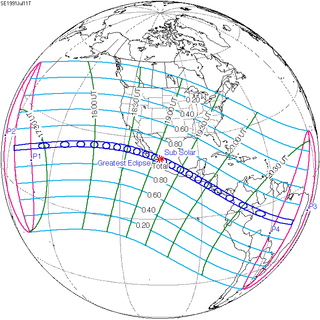 Total | -0.00412 | |
| 141 | 1992 January 4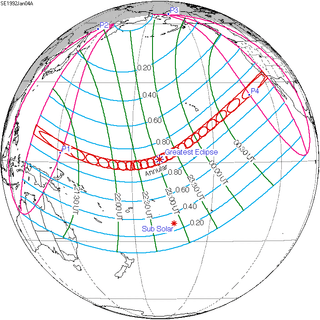 Annular | 0.40908 | 146 | 1992 June 30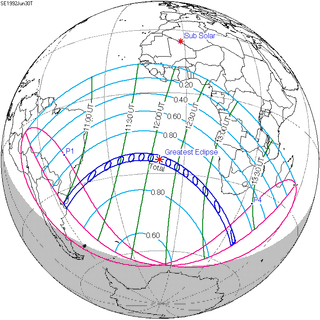 Total | -0.75120 | |
| 151 | 1992 December 24 Partial | 1.07106 | 156 | 1993 June 20 | -1.56439 | |
Saros 126
It is a part of Saros cycle 126, repeating every 18 years, 11 days, containing 72 events. The series started with partial solar eclipse on March 10, 1179. It contains annular eclipses from June 4, 1323 through April 4, 1810, hybrid eclipses from April 14, 1828 through May 6, 1864 and total eclipses from May 17, 1882 through August 23, 2044. The series ends at member 72 as a partial eclipse on May 3, 2459. The longest duration of central eclipse (annular or total) was 6 minutes, 30 seconds of annularity on June 26, 1359. The longest duration of totality was 2 minutes, 36 seconds on July 10, 1972. All eclipses in this series occurs at the Moon’s descending node.
| Series members 42–52 occur between 1901 and 2100 | ||
|---|---|---|
| 42 | 43 | 44 |
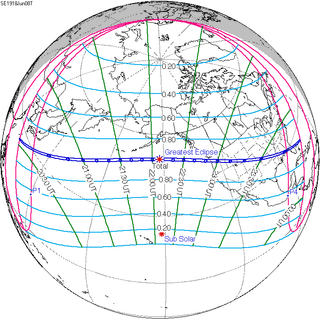 June 8, 1918 |
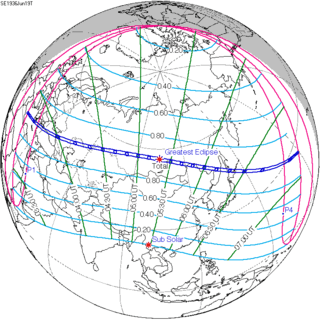 June 19, 1936 |
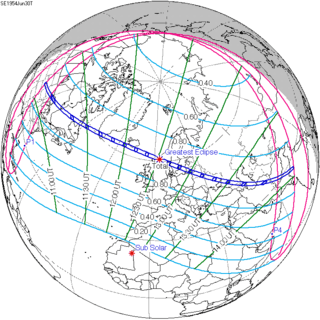 June 30, 1954 |
| 45 | 46 | 47 |
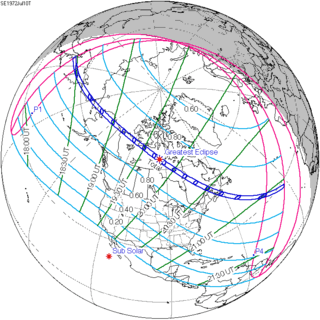 July 10, 1972 |
 July 22, 1990 |
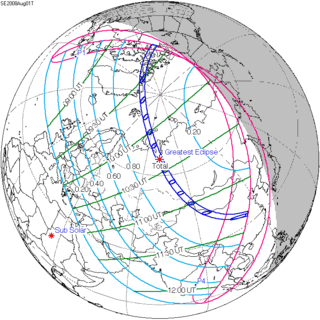 August 1, 2008 |
| 48 | 49 | 50 |
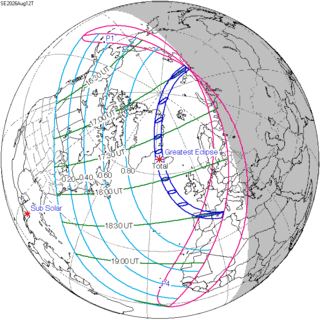 August 12, 2026 |
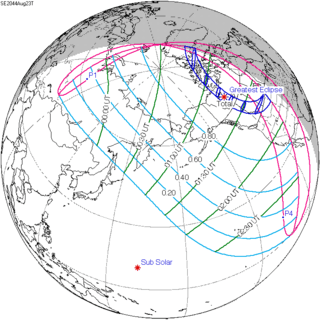 August 23, 2044 |
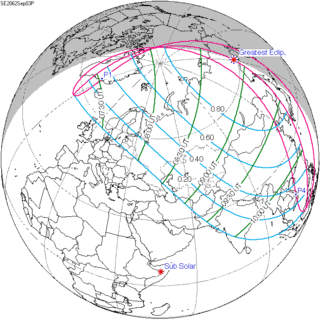 September 3, 2062 |
| 51 | 52 | |
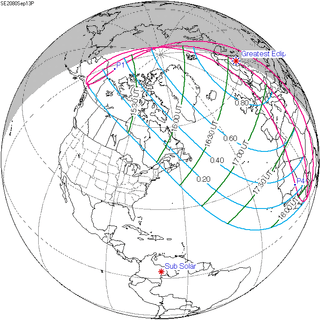 September 13, 2080 |
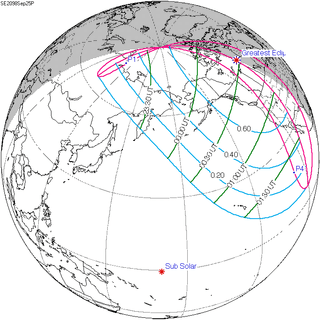 September 25, 2098 | |
Inex series
This eclipse is a part of the long period inex cycle, repeating at alternating nodes, every 358 synodic months (≈ 10,571.95 days, or 29 years minus 20 days). Their appearance and longitude are irregular due to a lack of synchronization with the anomalistic month (period of perigee). However, groupings of 3 inex cycles (≈ 87 years minus 2 months) comes close (≈ 1,151.02 anomalistic months), so eclipses are similar in these groupings.
In the 19th century:
- Solar Saros 120: Total Solar Eclipse of 1816 Nov 19
- Solar Saros 121: Hybrid Solar Eclipse of 1845 Oct 30
- Solar Saros 122: Annular Solar Eclipse of 1874 Oct 10
| Inex series members between 1901 and 2100: | ||
|---|---|---|
 September 21, 1903 (Saros 123) |
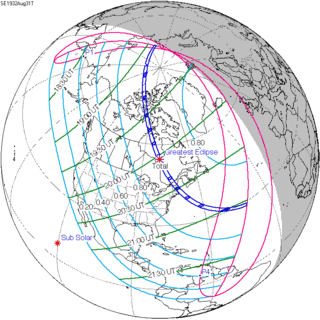 August 31, 1932 (Saros 124) |
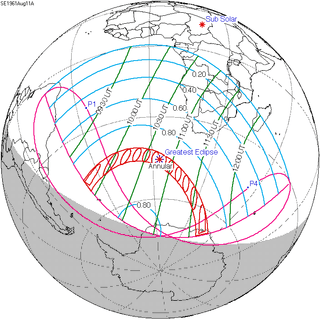 August 11, 1961 (Saros 125) |
 July 22, 1990 (Saros 126) |
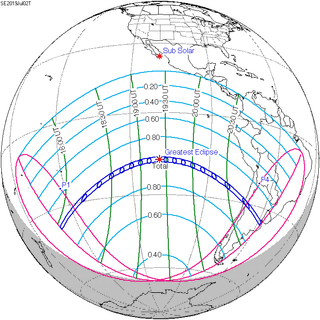 July 2, 2019 (Saros 127) |
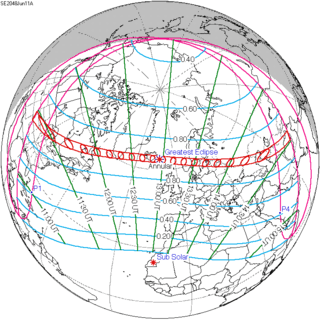 June 11, 2048 (Saros 128) |
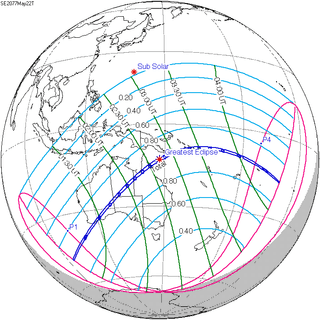 May 22, 2077 (Saros 129) |
||
In the 22nd century:
- Solar Saros 130: Total Solar Eclipse of 2106 May 03
- Solar Saros 131: Annular Solar Eclipse of 2135 Apr 13
- Solar Saros 132: Hybrid Solar Eclipse of 2164 Mar 23
- Solar Saros 133: Total Solar Eclipse of 2193 Mar 03
Tritos series
This eclipse is a part of a tritos cycle, repeating at alternating nodes every 135 synodic months (≈ 3986.63 days, or 11 years minus 1 month). Their appearance and longitude are irregular due to a lack of synchronization with the anomalistic month (period of perigee), but groupings of 3 tritos cycles (≈ 33 years minus 3 months) come close (≈ 434.044 anomalistic months), so eclipses are similar in these groupings.
| Series members between 1901 and 2100 | |||
|---|---|---|---|
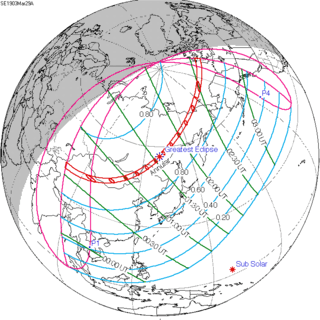 March 29, 1903 (Saros 118) |
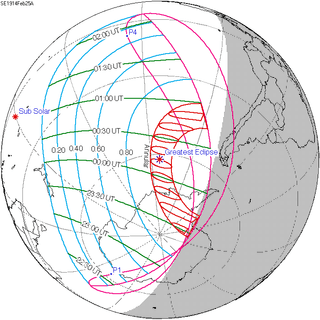 February 25, 1914 (Saros 119) |
 January 24, 1925 (Saros 120) | |
 December 25, 1935 (Saros 121) |
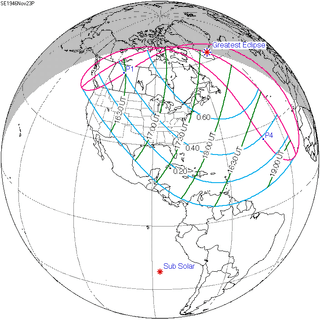 November 23, 1946 (Saros 122) |
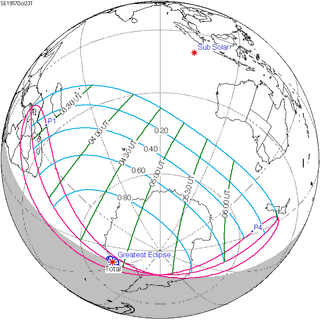 October 23, 1957 (Saros 123) | |
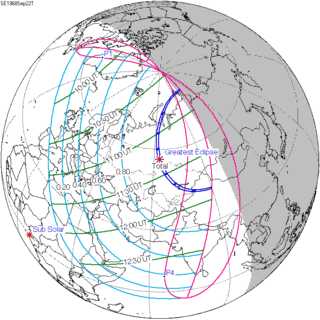 September 22, 1968 (Saros 124) |
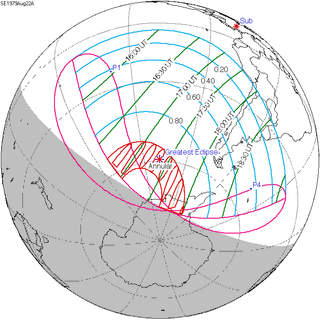 August 22, 1979 (Saros 125) |
 July 22, 1990 (Saros 126) | |
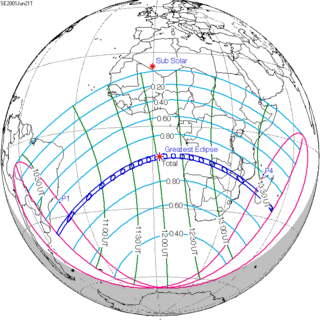 June 21, 2001 (Saros 127) |
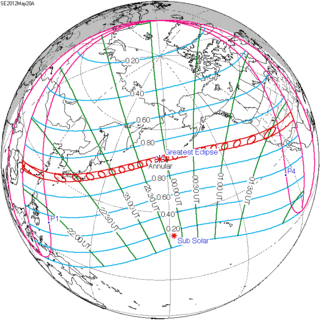 May 20, 2012 (Saros 128) |
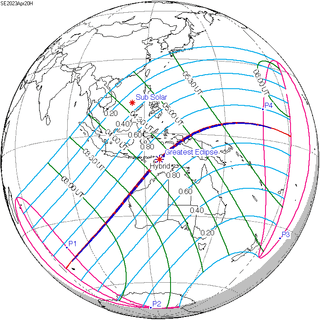 April 20, 2023 (Saros 129) | |
 March 20, 2034 (Saros 130) |
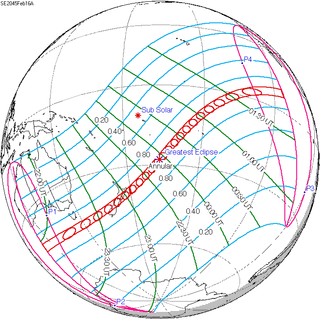 February 16, 2045 (Saros 131) |
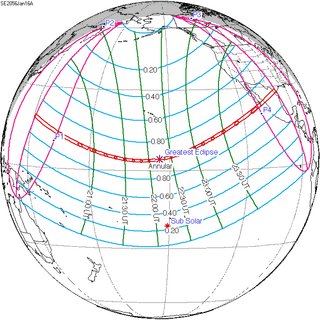 January 16, 2056 (Saros 132) | |
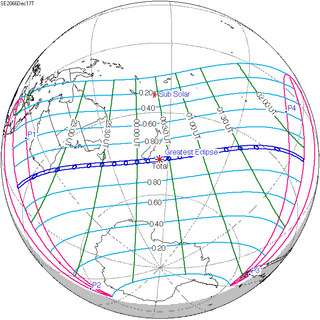 December 17, 2066 (Saros 133) |
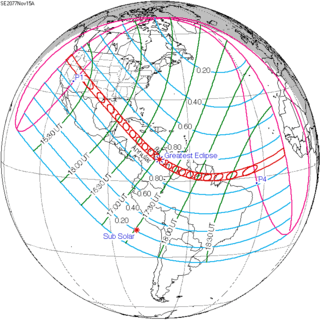 November 15, 2077 (Saros 134) |
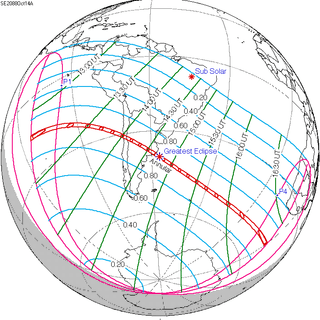 October 14, 2088 (Saros 135) | |
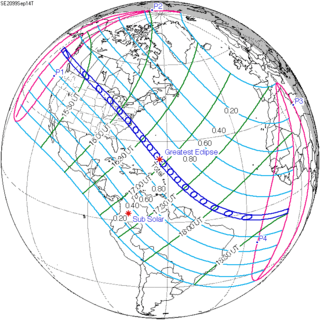 September 14, 2099 (Saros 136) |
|||
Metonic cycle
The metonic series repeats eclipses every 19 years (6939.69 days), lasting about 5 cycles. Eclipses occur in nearly the same calendar date. In addition, the octon subseries repeats 1/5 of that or every 3.8 years (1387.94 days). All eclipses in this table occur at the Moon's descending node.
| 21 events between July 22, 1971 and July 22, 2047 | ||||
|---|---|---|---|---|
| July 21–22 | May 9–11 | February 26–27 | December 14–15 | October 2–3 |
| 106 | 108 | 110 | 112 | 114 |
| July 21, 1952 | May 10, 1956 | February 26, 1960 | December 16, 1963 | October 3, 1967 |
| 116 | 118 | 120 | 122 | 124 |
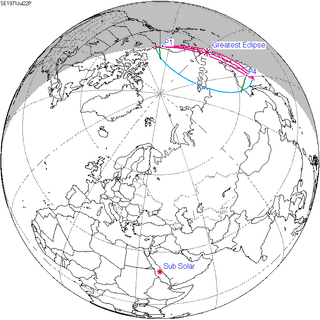 July 22, 1971 |
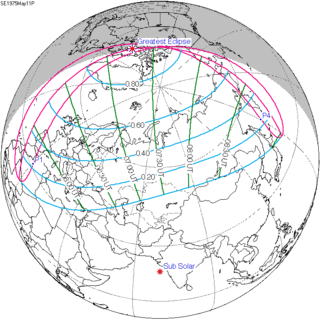 May 11, 1975 |
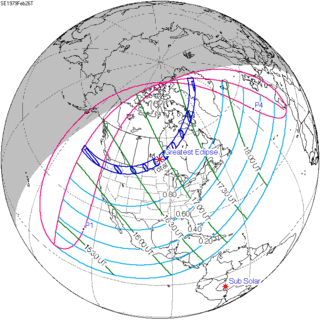 February 26, 1979 |
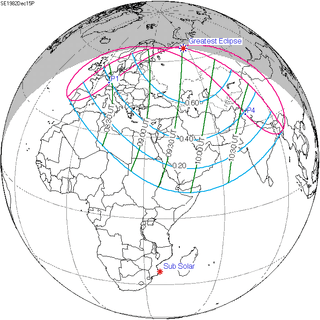 December 15, 1982 |
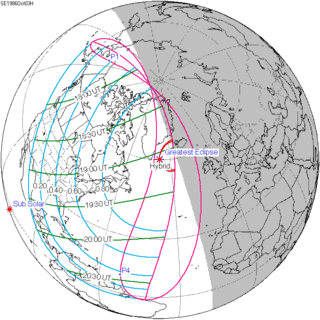 October 3, 1986 |
| 126 | 128 | 130 | 132 | 134 |
 July 22, 1990 |
 May 10, 1994 |
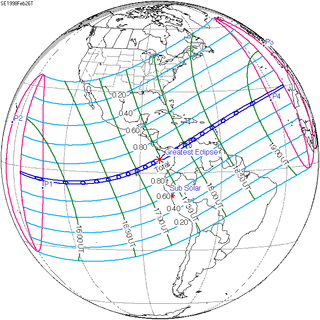 February 26, 1998 |
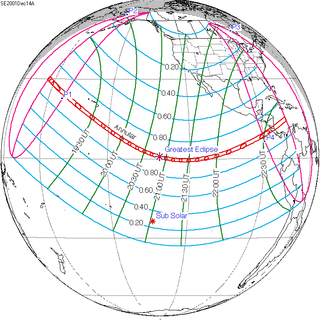 December 14, 2001 |
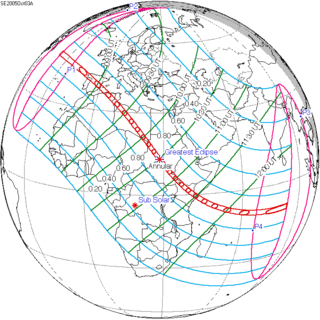 October 3, 2005 |
| 136 | 138 | 140 | 142 | 144 |
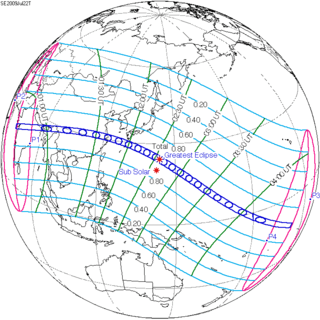 July 22, 2009 |
 May 10, 2013 |
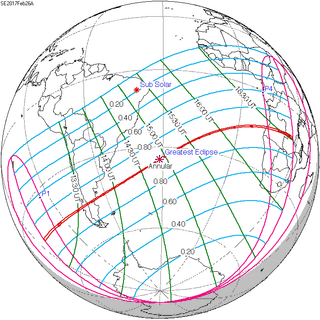 February 26, 2017 |
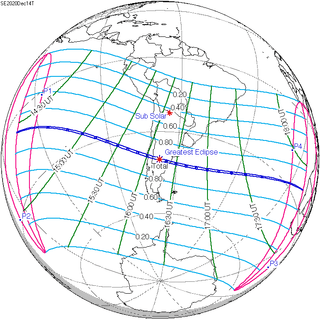 December 14, 2020 |
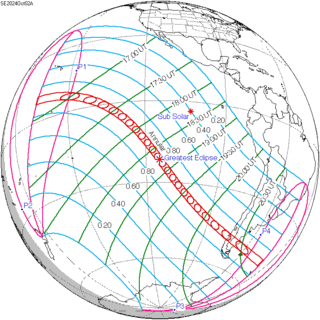 October 2, 2024 |
| 146 | 148 | 150 | 152 | 154 |
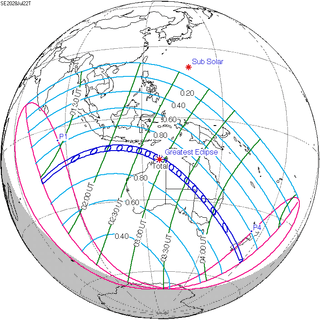 July 22, 2028 |
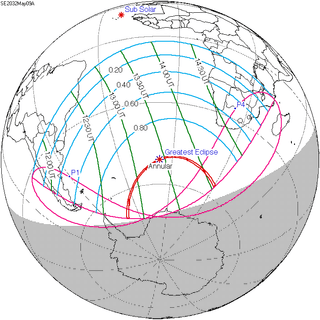 May 9, 2032 |
 February 27, 2036 |
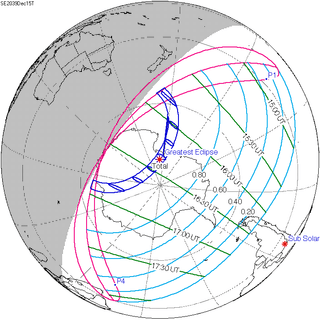 December 15, 2039 |
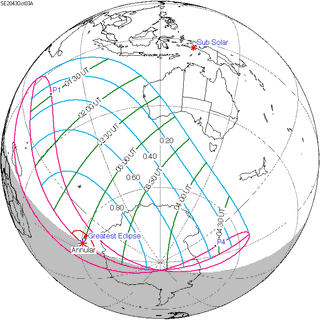 October 3, 2043 |
| 156 | ||||
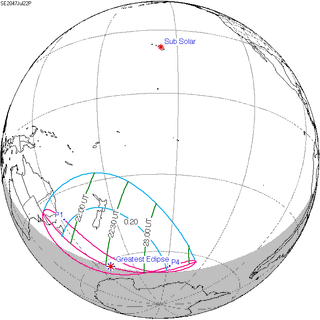 July 22, 2047 | ||||
Notes
- report and photos from Finland
- van Gent, R.H. "Solar- and Lunar-Eclipse Predictions from Antiquity to the Present". A Catalogue of Eclipse Cycles. Utrecht University. Retrieved 6 October 2018.
References
- Earth visibility chart and eclipse statistics Eclipse Predictions by Fred Espenak, NASA/GSFC
Photos:
.jpg)
